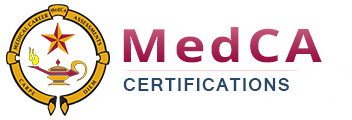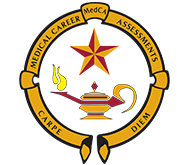Tester is testing
Author: admin
Choose to Become Certified Rebecca Jackson, CMOM, CAHI, CBCS There are many benefits to becoming certified in the medical field. The most obvious benefit is that some states require certification in particular areas of healthcare. But if certification is not mandatory, one should desire to become certified personally. Individuals should want to broaden and/or deepen their understanding of their field because they take pride in that knowledge. They should want to demonstrate their commitment to the ever-changing medical world and show employers that they are interested in these changes and want to improve themselves. Choosing to become certified reveals that one is competent and can uphold the standards set forth by, and meet/exceed the guidelines of, the certifying agency. Certification means one is responsible and ethical, aware of the certifying agency’s reputation, and will uphold these truths. Another advantage mentioned in the previous paragraph, is the certifying agency itself. The organization will provide opportunities to network with other medical professionals currently in the field. These opportunities may lead to new positions or career advancement. Many organizations post job openings right on their website, which are only available to members who are certified, as well as provide newsletters, workshops, etc. specifically for interested members. Professional individuals should want to support their colleagues in the field and can do so through certifying with an appropriate agency. The more connections one can make especially being a role model or mentor the better possibility of reaching long-term career goals, even when the job market is failing. Certification lends itself well to those looking to increase income, compensation, or benefits in their present place of employment. Ultimately, this results in greater success in their chosen profession. Becoming certified may lead to more desirable positions within the company and promotions. Having a certification on a resume puts that resume above all other applicants who did not choose to become certified, thus opening more doors for the certified applicant that will lead to more opportunities. This fact gives applicants a hefty advantage when applying for jobs over those not certified. The less experience one has in the field, the more important having a certification can become. The final benefit to consider is that almost all organizations require the certified individual to acquire continuing education of some sort, usually so many hours per year. Maintaining the certification demonstrates a higher level of knowledge about the medical profession as well. Obtaining continuing education proves that one desires ongoing enhancement of their knowledge and skills. There are no disadvantages to becoming certified in the medical field. Sources used: http://www.aami.org/certification/news/112006.why.html http://www.ahima.org/certification/whygetcertified.aspx http://www.all-things-medical-billing.com/medical-billing-and-coding-certification.html http://www.ehow.com/list_6762874_advantages-joining-medical-assistant-organization.html http://www.medicalassistantschools.net/certification
Cardiac Asthma/Cardiac Wheezes By Matthew Mouser RRT This particular subject has always been extremely important, in my opinion, for anyone working in a critical care setting. When I first graduated from respiratory school in 2006, if I heard wheezing while listening to a patient`s breath sounds, I immediately associated it with asthma or some type of bronchoconstriction. Albuterol or Albuterol & Atrovent would be ordered for the patient every four hours and that was that. Little did I realize that a vast majority of the patients I treated had heart failure, fluid in their lungs, no history of lung disease or smoking, and what I assumed was wheezing from bronchoconstriction was in fact fluid in the patient’s lungs, mimicking bronchoconstriction. When a patient has heart disease such as congestive heart failure (CHF), fluid builds up in their lungs. If not properly treated with a diuretic this fluid builds up and can cause wheezing, very loud audible wheezing that in most cases can be heard without even using a stethoscope. Administering a bronchodilator is not the solution and in most cases is harmful for the patient. One of the side effects of a drug such as Albuterol is an increased heart rate, and anxiety. If a patient is having difficulty breathing due to heart failure, increasing their heart rate and causing them to be anxious is very detrimental to them. I have made it a personal mission to educate fellow Respiratory Therapists, Nurses and even Physicians about this particular subject, as it is commonly overlooked. Just because a patient is complaining of shortness of breath does not always mean they need a breathing treatment, and most of the time, in my experience, administering a breathing treatment has no positive effect on the patient’s respiratory status because they simply do not have a reactive airways disease that is treatable with a bronchodilator. To make matters worse, I have seen Physicians document in a patient’s chart that they have COPD! I have seen this done by residents who are still babies in the world of Physicians. This is now in that patient’s permanent record and it is false, inaccurate information! I have never quite understood how a Physician can have the audacity to diagnose a patient with COPD without that patient having had a pulmonary function test or having been evaluated by a Pulmonologist, or having any history that would indicate development of a chronic obstructive pulmonary disease. Education is the key here and ignorance is the culprit. Every day I learn something new and I am personally grateful for it. It is our duty as healthcare workers to constantly want to learn more and better our understanding of our chosen careers. I encourage each and every person working in healthcare to constantly attempt to better yourself as a practitioner in your particular field.
The Importance of Nonverbal Communication in Patients of Other Cultures By Rebecca Jackson, CMOM, AHI, CBCS Reading a patient`s body language is more complex when the patient is from another country or has a different background. In order to effectively communicate with multicultural patients, the medical team has to learn how to watch nonverbal signs. One has to not only hear the words being spoken, but also read the body language, to understand the true meaning of the patient`s words. If listening is not done properly, misunderstandings and assumptions could occur that damage the practice`s relationship with that patient. When greeting a patient from a different culture, be aware that they may want to greet you in a different style then what you are accustom to here in American. For example, in Italy and France, patients may want to kiss one or both cheeks when meeting someone new. In Japan the patient may want to bow at the waist. Patients from northern Europe may only shake your hand with one pump, but patients from southern Europe may want to shake longer and warmer! In Turkey, too firm a handshake is rude, and in certain African countries a limp handshake is the norm. Plus certain cultures never have a man and woman shake hands. Touching in general, like shaking hands, should be done with caution. Also watch gestures with hands. In America we give high fives, thumbs up, and the `a-ok` sign on a daily basis. But in Russia, touching the pointer finger and thumb together represents a gesture for the anus, a gigantic insult to a Russian patient! In Greece, a thumbs up indicates the phrase `up yours`. Personal space should always be respected. Start the conversation at a larger space then what you would in American, just to be safe, and let the patient come into your zone. Personal space is different for everyone, so remember: getting that close is only for the length of that conversation! Grin and bear the uncomfortable closeness. It will strengthen the bond the medical professional will develop with that patient. Patients who feel comfortable will communicate more effectively, which is the ultimate goal in every encounter. Speaking of bearing uncomfortable situations, there are wide variances with personal hygiene in other cultures. Some cultures do not wear deodorant, brush teeth, or clean as frequently as others. There are Middle Eastern countries where perfume is used extensively to mask body odors. The perfume is not mean to be offensive but it may come across as such. Do not point out women who have not shaved their legs or underarms, or men who have not ever shaved their beards. These are examples of how other cultures view body hair. The final issue of cultural body language is eye contact. How and when to make eye contact can be appropriate or inappropriate, and it is a useful method of communication. In Germany and Spain, eye contact customs are similar to those in the United States. Eye contact with a stranger in France invites them over, as you find them interesting. In Asian, African, and Latin American cultures, making extended eye contact is seen as challenging and trying to assert dominance. In Middle Eastern cultures, eye contact between men and women is not appropriate. Avoiding eye contact can be seen as submissive or polite or respectful of the other person`s authority. So keep eye contact brief (4-5 seconds) and direct; blink as necessary; move the head occasionally so you do not seem frozen. All these tips will help support communication with the multicultural patient. Listening is an important soft skill that is difficult to teach. It must be learned through interaction, trial and error, and practice! Give your multicultural patient your full attention and look for the message in the patient`s body language as well. Do not try to rush the patient or lose focus on the conversation. With education, you will become culturally confident, respectful, and a better medical professional. Sources used: http://womeninbusiness.about.com/od/businessetiquette/a/making-eye-contact_3.htm http://blogs.hbr.org/cs/2011/03/shhh_listening_is_critical_in.html http://www.directhit.com/ansres/Cultural-Differences-in-Body-Language-Communication.html http://www.samdiener.com/2009/10/body-language-in-different-cultures/ http://eliothoppe.com/articles/20080108-body_language.html


